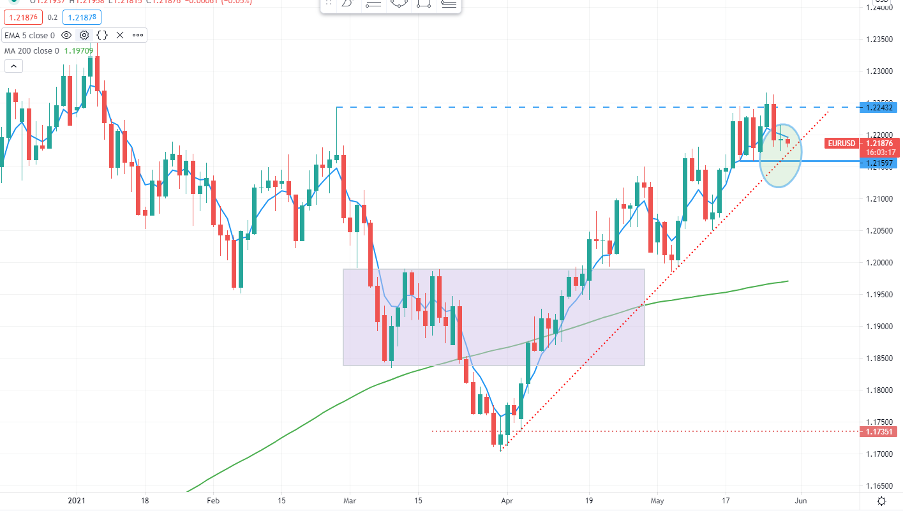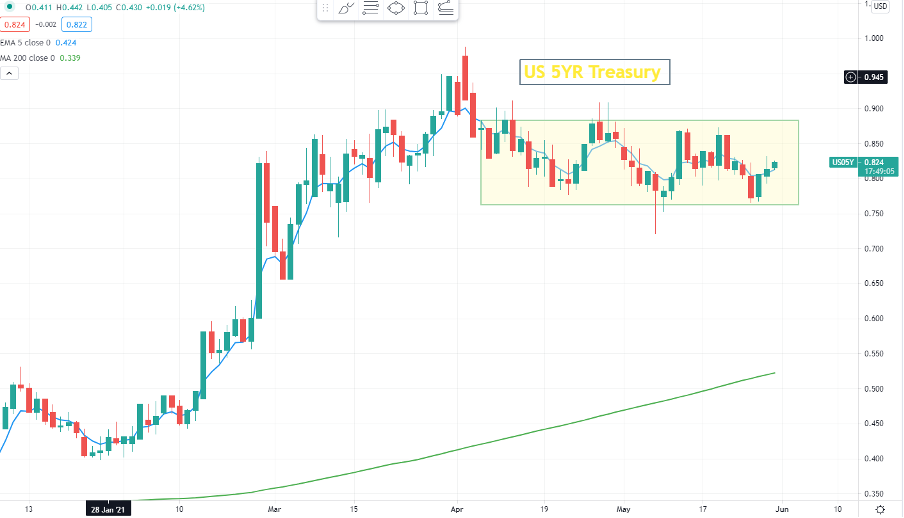US non-farm payrolls preview – can the US labour market wake up sleepy markets?

There's already a clear argument against the Fed buying mortgages bonds (MBS) given the US housing market is on fire. Without going into the technicalities, money market funds are pumping incredible levels of capital into the Fed’s Reverse Repo Facility (RRP), which is sterilising the effects of QE (Quantitative Easing) and makes me question the merits of continuing the QE program of buying US Treasuries.
So, there's a technical case to cut back on QE sooner, although the Fed will want to keep the idea of liquidity-for-longer firmly entrenched in the minds of the market, so as not to cause a rampant sell-off in the bond market and equity markets – QE at the end of the day is as much psychological as it's practical.
The Fed is lagging other central banks to normalise
While we debate a point to which the Fed wind back the pace of asset purchases, they're in effect lagging behind the policy normalisation programs seen from the RBNZ, Bank of Canada, Norges Bank (Norway) and the BoE. This is a really interesting dynamic as the US has typically led G10 FX nations out of recessions in normalising policy.
The Fed lagging other central banks, along with the move ever lower in ultra-short-term interest rates (12-month bills are now just 4bp, US commercial paper at an all-time low) and rising global growth expectations, has seen the USD under clear pressure throughout April and May. A weak USD is good news for the global economy, especially with the Chinese Yuan getting ever stronger, giving the Chinese importer purchasing power.
It’s no coincidence that the change in language from the likes of Fed vice chair Clarida has caused stability and a more positive tone in the Greenback. USDJPY has squeezed back to 110, and the highest levels since 9 April. EURUSD is eyeing a break of the April uptrend and recent range low of 1.2160, which when combined with divergence (RSI vs price), suggests a move below 1.2160 would confirm a bearish momentum flip for a move into 1.2050.

(Source: Tradingview)
The US 5yr Treasury is my preferred guide on how the market views Fed policy is oscillating between 75bp (or 0.75%) and 87bp. We can look at this as a guide for the USD – if the yield heads higher I’d be taking a far more constructed view on the USD and vice versa.

(Source: Tradingview)
The question is, aside from a position adjustment (the world has amassed a monster short exposure), is there anything that can cause the USD to trend higher and not just print a swing within a bear trend? Can US payrolls be that catalyst?
With the Fed edging ever closer to tapering, suggesting some closing in the divergence with other central bank policy - it does put Friday’s US payrolls report front and centre – will it prove to a volatility event for the US bond market, USD, and derivatives of this such as gold, crypto and equity markets?
Forecasts for the May NFP print
After the shockingly disappointing April print of 266k, the market is eyeing 663k jobs to be created in May, and the answer to whether this is a vol event is not just if it beats/misses’ consensus, but the extent too and how the market is positioned. Clearly, there's no issue with the demand for labour given what we’ve seen in hiring plans and job openings but there was a reluctance to get back to work from many in the April period.
Will that be true of the May numbers?
The US unemployment rate is expected to tick down 20bp to 5.9%, with hourly earnings expected to rise 1.6%, and both of these are important variables.
Given the lack of forecasting ability, I suspect the market will be reluctant to be overly exposed one way or the other. However, the lead indicators are again encouraging with many offering a belief that the risk, or higher probability outcome, lies in a number north of 700k jobs.
What’s the trade?
Another question for me is what's the level that could cause a significant move higher or lower in the USD? In my view, it would have to be close to 1m jobs. A non-farm payrolls print 300k above consensus should impact, especially if we see positive revisions to the April print and enforce the notion that the 17 June FOMC meeting will be the stage for a more robust discussion on the merits of tapering – where it will be formally announced at the Jackson Hole Symposium in late August.
In this scenario, USD shorts would struggle here. While in equity land I'd be looking at financials to work well, with names like JPM a solid place to be long.
A weak jobs print that maintains the unemployment rate steady at 6.1%. will keep the pressure on the USD, and see liquidity beneficiaries, like Gold, Crypto and Tech outperform.
The Fed have made it clear they are evidence based and put much weight on the labour market. A strong print while impossible to forecast, could get some excitement back in fairly sleepy markets.
Related articles
Ready to trade?
It's quick and easy to get started. Apply in minutes with our simple application process.
The material provided here has not been prepared in accordance with legal requirements designed to promote the independence of investment research and as such is considered to be a marketing communication. Whilst it is not subject to any prohibition on dealing ahead of the dissemination of investment research we will not seek to take any advantage before providing it to our clients.
Pepperstone doesn’t represent that the material provided here is accurate, current or complete, and therefore shouldn’t be relied upon as such. The information, whether from a third party or not, isn’t to be considered as a recommendation; or an offer to buy or sell; or the solicitation of an offer to buy or sell any security, financial product or instrument; or to participate in any particular trading strategy. It does not take into account readers’ financial situation or investment objectives. We advise any readers of this content to seek their own advice. Without the approval of Pepperstone, reproduction or redistribution of this information isn’t permitted.

